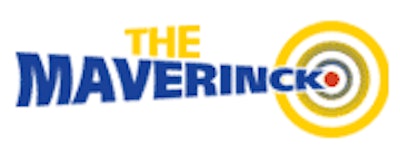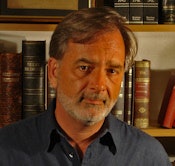
This morning, still partly asleep, I read on my toothpaste tube that the toothpaste provides "complete care." Later in the day I found a similar slogan in an infotainment article of a high impact factor radiological journal.
This morning, still partly asleep, I read on my toothpaste tube that the toothpaste provides "complete care." Later in the day I found a similar slogan in an infotainment article of a high impact factor radiological journal.
 Dr. Peter Rinck, PhD, Maître de Conférence/adjunct professor of medical imaging at the University of Mons, Belgium.
Dr. Peter Rinck, PhD, Maître de Conférence/adjunct professor of medical imaging at the University of Mons, Belgium.Many medical doctors, among them radiologists, also promise complete care: complete diagnostics, everything in one hand, the one-stop-shop. I wonder where they got that idea from. In some minds, imagination and reality seem to have traded places.
Yet, the idea is being heavily supported by some companies -- not only manufacturers, but also insurance and hospital groups. It's part of the intensive commercialization of medicine, radiology included. The two major radiological congresses, the annual meeting of the RSNA in Chicago in November and the ECR in Vienna in March are among the major platforms for commercialized radiology, and Germany's Medica and Arab Health add to it.
An increasing number of radiologists complain about manufacturers targeting directly referring physicians with the message that they should request patient examinations with ultrahigh-field MR equipment.
"The diagnostic overkill has been intensified by the marketing departments of the big players in the field putting commercials into mass media targeting other medical disciplines and the general public. American and European manufacturers try to sell more of their expensive machines through back-door blackmail and pressure," I heard at the ECR in Vienna this year. A number of private practices, and even some big hospitals, have given in to unproven claims about the superior performance of high-end 3-tesla MRI equipment and PET/CTs. Some private centers are even considering the idea of acquiring 7-tesla machines.
"We are killed by rumors that 1.5-tesla is inferior to 3-tesla in diagnostics," added one enraged German radiologist.
The 3-tesla machines are promoted by manufacturers. They have up to 20% more signal-to-noise (not 100% as promised), less gray/white matter contrast than 0.5-tesla (except if you enhance normal gray/white matter contrast with a gadolinium contrast agent), are more expensive -- but also more fashionable in certain circles. Google tells you: "A body scan can save your life" -- and Amazon would tell you and might announce soon: "These customers also buy Louis Vuitton bags and botox for lips, forehead, and other parts of the body." Do we have to wait for something like that?
Do we need equipment for the less than 1%, or perhaps a tenth of 1%, of patients (or rather customers) in whom you might detect something that may be considered pathological? Such equipment is perfect for research institutions, perhaps university hospitals, but not for "real" daily life patient care.
The amalgamation between medicine and massive financial interests has not led to an improvement of health services, but rather to deterioration, both in the arts of diagnosis and healing, and in ethics too. When I had problems with my right knee three years ago, I went to an orthopedic specialist who made the exact diagnosis after listening to my history and a short physical examination. He proposed to remove the torn tissue, but first he wanted to confirm his diagnosis with an MRI examination -- although it's not really necessary, he conceded -- without looking at me.
The MRI exam was a mere curiosity from my side. The orthopedic specialist was one of the owners of the equipment. We both knew that the sensitivity and specificity of an MR study and the clinical examination by a good doctor are the same. The same holds for CT and other technologies.
At the 2010 RSNA meeting, Dr. David B. Larson (director of quality improvement, radiology, at Cincinnati Children's Hospital Medical Center, Ohio) underlined that the use of CT in hospital emergency departments grows exponentially, despite all the odds, among them high costs and radiation exposure. Whereas in 1997 one in fifteen patients above 65 underwent CT in the emergency department, the number had increased to one in five in 2007, he said.
The number of emergency department visits that included a CT examination increased from 2.7 million to 16.2 million -- a 5.9-fold increase and a 16% compound annual growth.1 Such studies, lectures, and publications are of utmost importance. They even make the evening news.
Perhaps attending the RSNA is not such a bad idea after all. Then you don't have to wait for the bad news.
The comments and observations expressed herein do not necessarily reflect the opinions of AuntMinnieEurope.com, nor should they be construed as an endorsement or admonishment of any particular vendor, analyst, industry consultant, or consulting group.
Reference
- Larson DB, Johnson LW, Schnell BM, Salisbury SR, Forman HP. National trends in CT use in the emergency department: 1995-2007. Radiology. 2011;258(1):164-173.



















